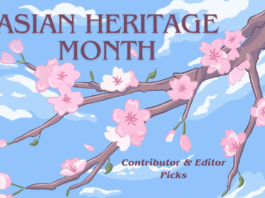Black leather sofas adorned the blank stage of the National Gallery of Canada’s (NGC) auditorium.
The NGC, the Palais de Tokyo, and the Centre Pompidou-Metz, are all facing the same question: what does it mean to be a 21st century art museum?
Seated in the chairs were director of the Palais de Tokyo, Jean de Loisy, and Laurent Le Bon, director of the Centre Pompidou-Metz.
NGC director, Marc Mayer, invited the two French museum visionaries to discuss what made their respective galleries unique and what they were doing to stand out and engage the public.
“They’re deep thinkers, they’re philosophical, they’ve really thought about the big picture,” Mayer said.
“They’ve got the 30,000-feet view of what they’re doing and they’ve got the two-inch view of what they’re doing,”
Loisy, director of the Palais de Tokyo in Paris, said that the French have very little to teach Canadians in terms of art.
“When you visit museums or institutions, like the Musée des Beaux-Arts [The NGC], I think that there is a fantastic diversity of actions and there is a very high quality of artistic creation,” he said.
“The problem is more that, in France, we don’t pay attention to the quality of the artists you have here.”
Le Bon, the second art aficionado, was invited to take part in the discussion of 21st century museums and contemporary art. He agreed with Loisy, saying that while he only really knew of Western Canadian art, Ottawa’s artistic prowess has impressed him.
“I think we have many things to learn from Canada — the culture, the energy,” he said.
“I don’t mean that Europe is dead. I think that we’re instead in the process of a change of civilizations.”
While many museums are grappling to engage younger audiences and keep revenues up, some have shifted to going digital.
Mayer said he thinks this is not the way forward.
“Art doesn’t go through computers,” he said. “You can’t see the scale of the thing, you can’t see the texture, you can’t see its real colour, you can’t see how it relates to the rest of the objects in the room or whether it’s even related at all.”
Loisy said the Palais de Tokyo puts on events, whether they be musical shows, audio-visual installations, or otherwise, they keep young people coming back.
The biggest audience for the museum is the 18-25 demographic. The biggest problem for the Palais, according to Loisy, is attracting those older than 35.
“It’s an attitude that brings the public, it’s not a specific program,” he said. “The attitude has to be cooler, no arrogance.”
However, the romantic art gallery archetype has not faded at the Palais.
“It’s a place where people love to kiss . . . and it is a well known place for kissing,” Loisy said.
Le Bon said the Centre Pompidou-Metz now uses temporary exhibits to attract new people to the museum.
The problem isn’t making people come back again and again, Mayer said, but instead attracting new people.
The public needs an artistic education, he said.
“When I see art I don’t understand, I get very excited and I’m discouraged by people who are pissed off because they don’t understand the art.”
Loisy echoed his sentiments and said that he thinks art serves the public.
“It’s a necessity and the price of ignorance is much more expensive than price of culture.”



